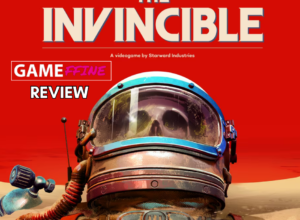Back in the mid-90’s, the now-defunct ICOM Simulations released three point & click adventure games for the Apple Macintosh – Déjà Vu: A Nightmare Comes True (which we will simply refer to as Déjà Vu from now on), The Uninvited and Shadowgate, all of which were later ported to a variety of platforms including the Nintendo Entertainment System.
Now Abstraction Games have brought these classics to modern systems in a collection called 8-Bit Adventure Anthology: Vol. 1; apart from PC (the platform on which the game is reviewed) it’s also available on the PlayStation 4 and Xbox One.
8 Bit Adventure Anthology
DETAILED REVIEW
Story & Narrative:
All three games have very different stories:
Shadowgate: This game takes place in a medieval fantasy setting; being the last in the line of kings, it’s your job enter the Warlock Lord’s lair and thwart his attempts to summon Behemoth, a large and powerful demon.
Déjà Vu: Taking on a noir, detective theme, you play as an amnesiac man who wakes up in an empty bar with no memory of his original self and eventually finds himself tangled in the webs of a sinister scheming plot in 1940’s downtown Chicago.
The Univited: A take on modern horror, The Univited has you exploring a creepy mansion in search of your missing sister who disappears behind the house’s haunted walls looking for help after your car crashes.
The variety is appreciated and the story of each game is decent enough to keep you interested, although there are more than a few WTF plot moments, especially in The Uninvited.
Graphics & Visuals
There’s not much to say here since these are pretty faithful ports of their NES counterparts.
On the (pretty barebones) game select screen, you can choose to start with any one from the three included games in any order you prefer (each game offers three save slots as well).
The visuals, while maintaining the pixel-perfect look and feel of the originals, have been improved in terms of sharpness and color.
You can also choose between 4 of the various screen filters to change the game look like it’s being played on a CRT TV or even a terminal.
Gameplay & Mechanics
Despite having vastly different stories, all three games play similarly. As you have seen above, the game interaction screen consists of:
- A windowed, first person view of the player.
- An inventory – to store any items you come across and to keep a note of spells and locations of places.
- A map of the room, indicating doorways.
- Action buttons – used to perform every single action in the game, ranging from something as simple as picking up an object or speaking to people to various complex combinations of commands, like picking an object and putting it inside another and then using that on an object in the environment.
Since these are point & click games, the basic gameplay premise is simple: explore your surroundings, collect items and solve puzzles to progress forward. You can even mess around trying out various hilarious combinations with the commands on hand; for example in Déjà Vu, using the Gun on “Self” causes the player to kill himself.
But this is also where the game shows it’s age: the UI is clunky to navigate; performing any action feels like a chore, especially when you have dozens of items in your inventory to wade through. The map can also get confusing at times (specially in Déjà Vu’s Chicago alleys).
There are many ways to face a game over, some obvious and some, not at all. You may die just by entering a location, like going inside a trapdoor, assuming it takes you to a room but ending up falling to your death or worse, just going past the police station in Déjà Vu will make you fall into an under-construction pit and die (you’re welcome). Thankfully, you don’t lose all your progress and are only set back one room/area (like a checkpoint) with all your inventory items intact prior to entering. However there are achievements for dying (17 to be precise) in specific way so your efforts are not in vain.
Another thing that may put some people off, is that time isn’t on your side; Shadowgate features two torches, at the very least one which you have to keep lit (only way to do so is to find more torches scattered around); if you run out, it’s an instant game over. Déjà Vu and The Uninvited are more lenient in this matter since the time limit can be avoided (by taking the antidote on time in the former game and by not picking up the ruby or haunted mask in the latter).
Environmental puzzles are the meat of these games, and they’re by no means a cakewalk; the fact that you have no idea what works on what means you’ll get stuck at one point or the other somewhere down the line. For eg. how am I supposed to know that dropping the weird Sphere into the lake will freeze it or throwing the Star in the ice cave will melt it? Vagueness aside, some of the puzzles are actually cleverly made and most of them actually feel rewarding to figure out on your own (like the Sphinx’s riddles from Shadowgate).
Sound
This is perhaps the high point of this collection; all three games have catchy, 8-bit soundtracks, that lend well to their respective atmospheres. Although Shadowgate’s alarm tone when your torch is close to burning out can be quite annoying.
VERDICT
While the games may not have aged that well and bring some frustration, 8-Bit Adventure Anthology – Vol. 1 still delivers a new experience for modern gamers and is still worth checking out for those interested in having a taste of the bygone era of adventure games; retro game fans will NOT be disappointed.






